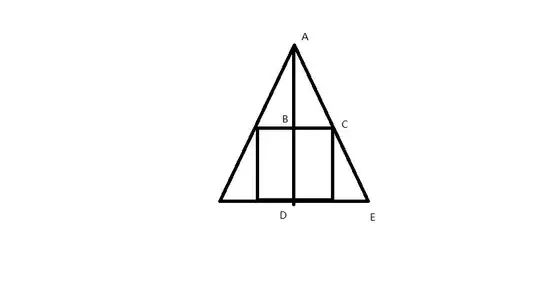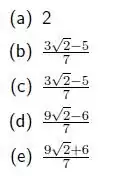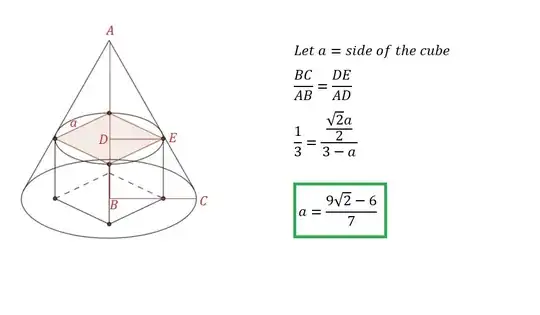A right circular cone has a base of radius $1$ and height $3$. A cube is inscribed in the cone so that one face of the cube is contained in the base of the cone. What is the side-length of the cube?
I tried to make a side projection of this solid: 
$AD=3$ and $DE=1$. $△ABC$ is similar to $△ADE$ and thus $\frac{AB}{AD}=\frac{BC}{DE}$, so the length of the cube is $\frac65$. Unfortunately, there's no such choice. What's wrong with my projection? How should I do this correctly?


